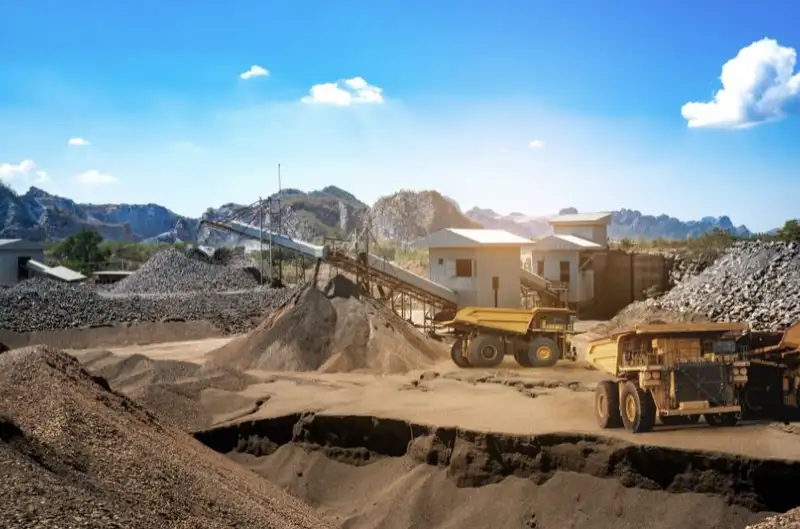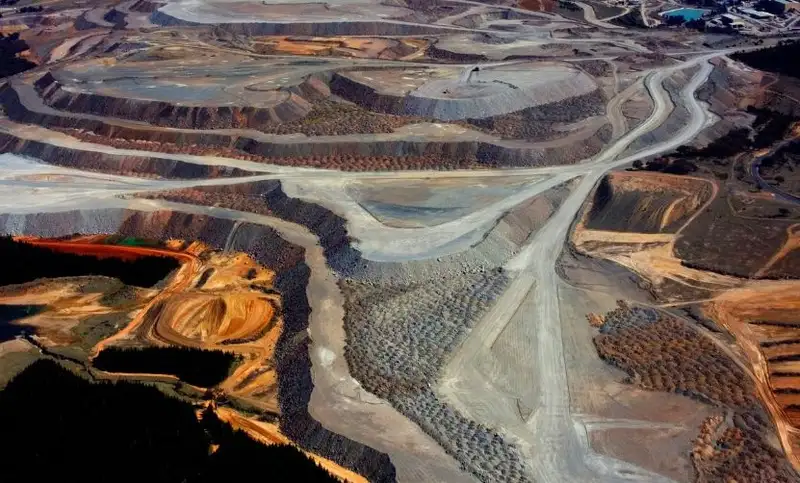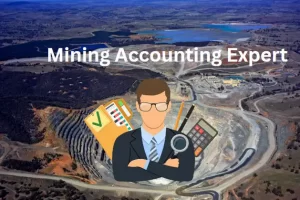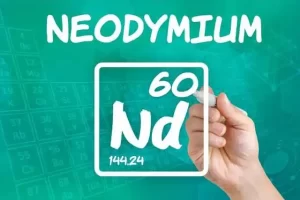The mining waste produced and generated during the mining process can be reused as an energy source. This can be done by converting the waste into gas, steam, or electricity. A few companies are already taking advantage of this opportunity and are turning their waste into an energy source.
The main reason why these companies are doing this is to reduce their carbon footprint. They also want to create a sustainable process for the future that will not cause any harm to the environment.
What is Mining Waste?
Mining waste includes solid wastes like mine tailings and slag leftover after processing ore. It also includes liquid wastes like mine drainage and mine water used in the mining process.
Mining is extracting minerals or other resources from the Earth, such as metal ores, coal, oil shale, gemstones, etc. Mining waste is a byproduct of mining.
Mining waste can harm the environment if it is not properly managed or disposed of.

What are the sources of mining waste?
They are a byproduct usually discarded and left in the ground. Mining waste contains metals and minerals used to make products like steel, aluminum, and copper.
It typically comes from mining operations that extract coal, gold, silver, iron ore, and uranium. The waste can be a solid or liquid material depending on the type of mining operation.
What are the effects of mining waste?
They are a global problem with no easy solution. As mining operations continue to expand, this problem will only get worse.
The impacts are many and varied. The effects are mostly negative because they can have a large-scale impact on the environment and human health.
The effect is:
- 1) It can cause soil erosion
- 2) It can contaminate water sources
- 3) It can lead to air pollution
- 4) It can cause acid rain
- 5) It can release toxic substances into the air and soil 6) Mining wastes may contain heavy metals that are harmful to human health
What are the alternatives to mining waste?
Mining is a process that has been around since the beginning of time, and it continues to be an important part of our society. However, mining waste has led to many environmental problems such as pollution and deforestation.
There are alternatives to mining waste like recycling and composting, which can be used in place of mining. Other alternatives include using renewable energy sources like solar power or wind power.
What are the ways that can be recycled or reused?
In the current world, we have a lot of waste we need to dispose of. One way to do this is by recycling and reusing the materials. Some ways that mining waste can be recycled or reused are as follows:
- The materials can be used for construction purposes or in manufacturing.
- The materials can be used for road paving and other civil engineering projects.
- The materials can be turned into products like plastics, paints, or pigments.
- The materials can be used as fuel for cars and trucks.
Where can we find information about mining waste?
Mining waste is a mixture of rock, sand, clay, and water. It is a byproduct of the extraction process and can be found in all types of mines. The most common type of mining waste is mine tailings. This type of waste comes from the process of crushed ore to extract metal or minerals.
The ore is then ground into fine particles mixed with water to make a slurry. The slurry then flows through pipes to large settling tanks where the particles settle out and solidify into a solid mass that shovels or screens can remove. The other type of mining waste is mine dumps which are used when there isn’t enough space in the settling tanks for all the material coming out during the extraction process.
What is the difference between mining waste?
Mining waste is a type of waste that is created from the process of extracting metals from the Earth. This type of waste includes all the materials used for mining, such as sand, rock, gravel, and water. Mining waste can be classified into three types:
Mine drainage
Mining tailings are the waste materials that are left over from the process of extracting metals from the Earth. These can include sand, rock, gravel, and water.
Tailings are materials that remain after a mining operation removes ore from the Earth. Tailings vary depending on what type of mine they were left in, such as sand, rock, gravel, or water. In the mining industry, guidelines are provided to help define what tailings are.
In the United States, these guidelines are set by the Environmental Protection Agency under the Solid Waste Disposal Act. Tailings may be classified into three types:- Concentrated tailings (generally dregs left after mineral processing)- Coarse tailings (galleries of loose material)- Fine tailings (finely ground ore).
Mine drainage
Mine drainage is a type of waste that comes from mining operations. My drainage contains substances such as water vapor and methane gas extracted during mining operations to remove ore from the Earth. Mine drainage is typically pumped out of the mine in large tanks.
A polluted body of water contains harmful or toxic substances in such a concentration as to make it dangerous, indeterminate, or unfit for any use other than industrial or scientific research. Polluted bodies of water originate from chemicals, untreated sewage and industrial waste, polluted stormwater runoff, and animal waste.
Mine slimes
Mine slimes are waste materials that remain after the ore is removed and can be difficult to remove from machines. A slime block is a block that can be mined but will produce no more.
Slime blocks typically form when the player mines away everything from an ore vein and leave only the bottom layer, which can then be collected as a liquid-like material known as slime, either in bucket or dispenser form.
Some slimes are used to make potions or other materials. Slime comes in many different colors and tastes. Black slimes are the most common type found naturally, as they’re commonly found near ores/ores removed from the ground.
The fact that they don’t produce ore makes it difficult to use them in crafting recipes without a diamond pickaxe. A slime block is a block that can be mined but will produce no more.
Slime blocks typically form when the player mines away everything from an ore vein and leave only the bottom layer, which can then be collected as a liquid-like material known as slime, either in bucket or dispenser form. Some slimes are used to make potions or other materials.
Why Isn’t Mine Waste a Priority for the Government?
Mining waste is a significant problem in the world. Some countries have banned mining, and others have strict regulations for how much mining waste can be stored.
There are many reasons why mining waste management is not a priority for the Government, but one of the most important ones is that it’s hard to track where it goes. There are no reliable sources of information on where mining waste ends up, so there’s no way to know if it was properly disposed of or not.
The Government has been trying to address this issue by creating laws and regulations that limit how much waste can be produced and stored, but these laws haven’t come into effect yet because they’re still being worked on.
How do we know if our company is producing mining waste?
Companies that produce mining waste must be careful in handling it because it can pollute the surrounding area and make people sick. Companies should also take measures to prevent this from happening in the future by analyzing their current processes for potential problems.
How much waste is produced in mining?
Mining is a process of extracting valuable minerals or metals from the Earth. These materials are used to make products such as jewelry, electronics, cars, and many more. However, the process of mining has its problems. A lot of waste is produced during the process, which can harm people and the environment if not disposed of properly.
The waste produced from mining can be broken down into three categories:
- The waste which cannot be recycled or reused;
- The waste that can be recycled or reused but not in its original form;
- The waste that can be recycled or reused in its original form.
How to Find the Value of Your Salty Gold Mine
Salting a mine is a technique that miners use to extract gold from the ground. The process involved mixing the mine’s ore with a chemical compound called mercury, which would cause the gold to dissolve and be carried away by water.
The value of your salty gold mine depends on your willingness to spend on it. If you have the capital and human resources, you can turn your mind into an industrial operation. If not, there are other ways to make money from it.
Salting mines has been done for centuries and remains a popular mining technique today.
Can the People Benefit if Mining Wastes are Regulated?
As the world becomes more reliant on mining, regulating mining waste has become a major concern.
According to a study by the United Nations University, mining waste is responsible for about 13% of greenhouse gas emissions. It is also estimated that mining waste in Canada could amount to $22 billion over 20 years.
The study found that if regulations were implemented and enforced globally, it would reduce the number of people exposed to toxic pollution by about two-thirds.
They are a source of valuable resources that can be used to create new products.
Many companies are mining for resources such as metals, minerals, and fossil fuels. They are using up natural resources faster than the Earth can regenerate, leading to massive waste.
The value of mining wastes has been discovered by some companies who have started to benefit from them. For instance, some companies have been able to extract platinum from gold-platinum ore and sell it for a higher price than gold alone.



